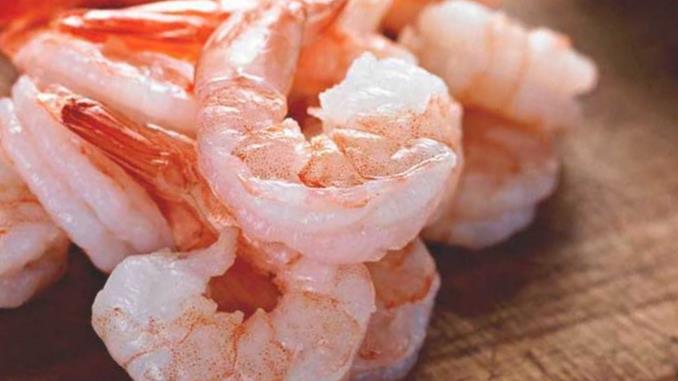The answer is yes, you can enjoy the tails, but the taste may differ depending on the type of dish.
Contrary to popular myths, the human digestive system can process and absorb nutrients from shrimp tails. The key factor lies in choosing the right type of shell and the cooking methods.
This article will uncover the facts about shrimp tails and provide insights into how you can safely make use of their nutrient content.
Related: The most popular types of meat you should know about
The Bigger The Shrimp, The Harder The Shell
The main component in the shrimp shells is chitin, an organic fiber that builds the tough shield. Hard shells from colossal shrimps and lobsters cause chewing difficulty and bear a high risk of damaging your throat. Chewing this type of shell can even chip your teeth.
For small or medium-sized shrimps, the shells are soft enough for you to consume. The human guts have the enzyme chitinase that breaks down chitin, making it easier to absorb. Remember to chew carefully and avoid swallowing big chunks of the shell.
Similar to other chemical formulas, chitin can also cause allergies. If you have previous medical records on allergies, you need to avoid anything that involves chitin, which includes food like shrimp stock.
3 Reasons Why You Should Keep the Tail
A More Delightful Plating
Garlic butter rice, tempura, and seafood cocktails are examples of food where plating looks better with the tails on. Overall, this shellfish will look bigger and have eye-catching colors.
In terms of consumption, the tails have a neat benefit. For finger foods and appetizers like the shrimp cocktail, you can hold the tails to avoid touching the meat directly.
If you are a home cook, it’s time to upgrade your plating skills by experimenting with shrimp tempura with the tails intact.
It Enhances the Flavor
You may have noticed that restaurant chefs keep the shrimp tails all the time. This method preserves the chitin in the tails, which greatly boosts the dish’s tastiness by offering a crunchy bite. Plus, the tails complete the cuisine experience since you eat the whole shellfish.
Each Tail Has Rich Nutritional Value
Aside from fiber, the tails are rich in proteins and minerals. The category includes vitamin B12, which ensures your cells are healthy by boosting the blood supply.
Vitamin B6 has amazing benefits of protecting your body from common infections, improving mental health, and reducing heart diseases. Not to mention zinc improves the immune system and metabolism. Another nutrient is iodine that prevents thyroid diseases.
Are Shrimp Tails Edible In Raw Dishes?
Shrimp ceviche is one of the most popular dishes, with raw shrimp meat as the main ingredient.
The recipe includes marinating this raw shellfish with fresh lemon juice. The high level of acidity will process the meat. The dish is safe to eat when the meat turns into a plump, pink hue.
Over time, many chefs have improved the recipe and switched to cooking the meat halfway before marinating. This new process lowers the risk of bacterial infection. However, this dish is not recommended for people with allergies or weak immune systems and pregnant women.
Consuming an undercooked shrimp dish may lead to food poisoning symptoms, from itchy skin, nausea, to critical allergic reactions like anaphylaxis.
Is There Calcium In Shrimp Tails?
Although the tail is a rich source of nutrients, it has little to no calcium. Each tail has chitin in the shell, and nutrients mostly concentrate in the meat.
One of the common mistakes for parents is including the tails in dishes for young children with the hope of supplying them with extra calcium. Children tend to eat food hastily, so the tails can become a choking hazard in this case.
Do You Eat The Tail Of The Shrimp In Sushi?
In sushi restaurants, most soft-shelled seafood like prawns and crabs can be eaten completely.
The chef’s process raw food items in salt and vinegar, then boil them and combine them with rice to make nigiri for the sushi platters. Another method is deep frying them completely for maki rolls or tempura.
Since the methods for common sushi dishes involve thoroughly cooking the shellfish, the dishes are safe for you to enjoy everything, including the tail. The deep-fried shrimp tail is indeed the juiciest part in the tempura rolls, while tail-on shrimp nigiri pairs well with wasabi.
Is The Vein In Shrimp Really Poop?
Yes, the shrimp vein running from the head to the tail is the digestive tract filled with grit. You can identify this vein by looking for the black line under the clear flesh.
There is no harmful effect on human health when consuming the whole vein inside. However, keeping the vein ruins both the appetizing look and the taste, which is a recipe for disaster for a picky eater.
One helpful trick for even beginner home cooks is cutting along the back of the fresh shellfish to remove the vein. Next, boil them for about 2 minutes, then pour them into cold water. At this point, you will have delicious food with the back blooming appetizing butterfly wings.
Conclusion
Now that you have solved the mystery of whether you can eat the tails on shrimp, the next step is making good use of the tails in the daily menu.
Every part of the tail, from the shell to the meat, provides nutrients, so keeping it in your dishes will improve your health greatly. Look for soft shrimp shells that support digestion. One factor to note for home chefs is to cook this shellfish thoroughly to ensure a high safety level.

